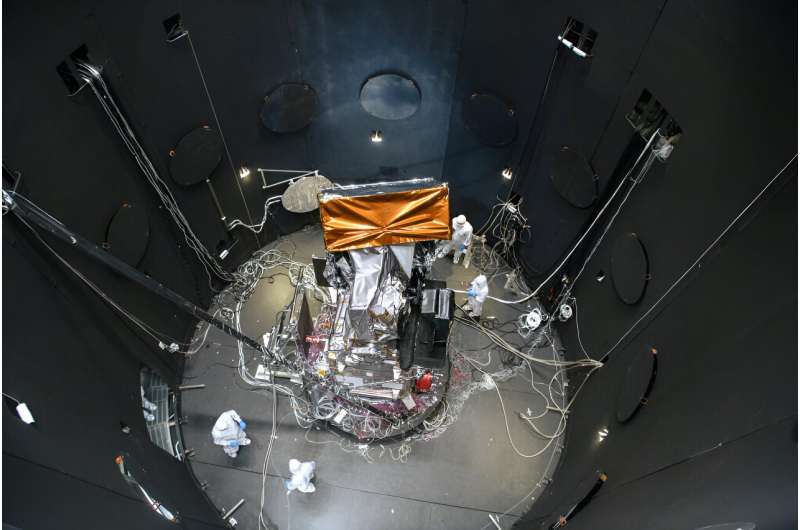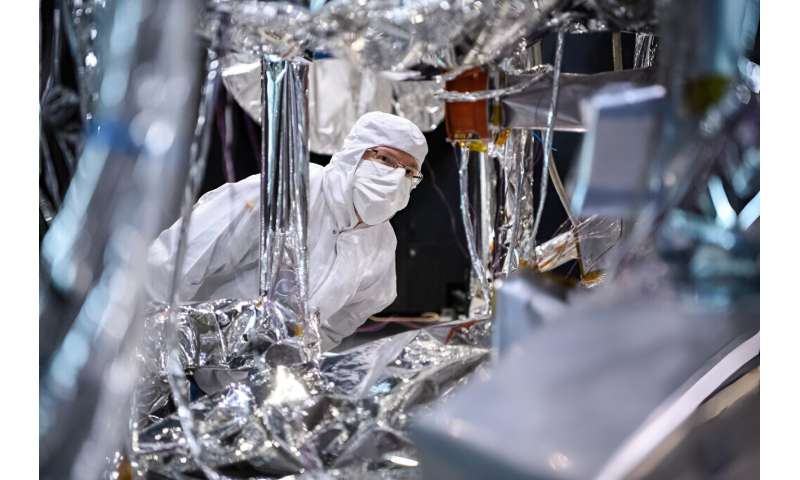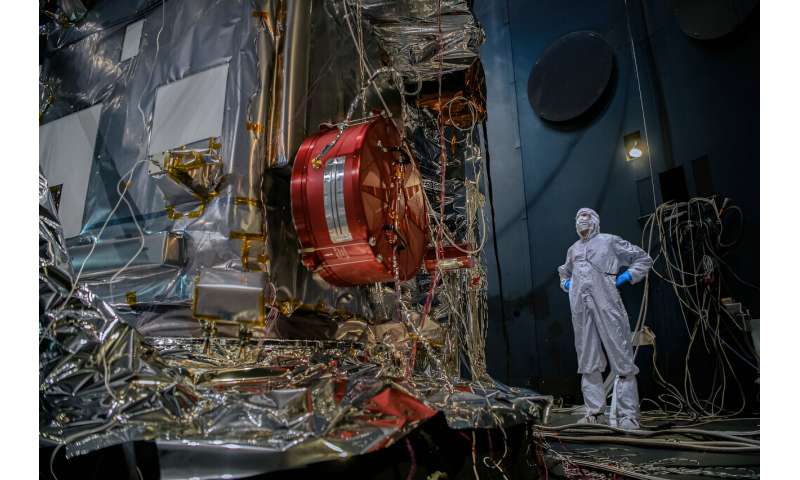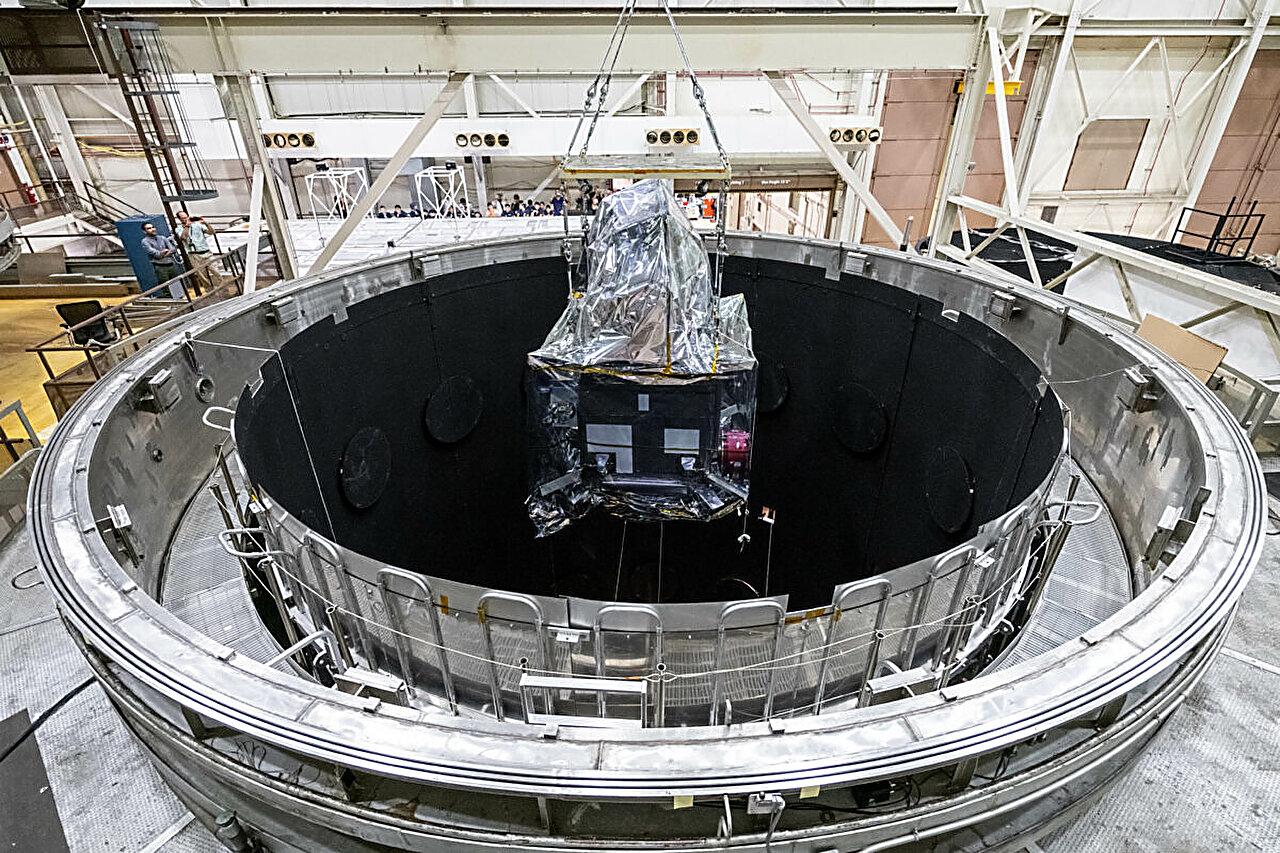Consider it the “mother of all tests.”
This summer, the PACE spacecraft (short for Plankton, Aerosol, Cloud, ocean Ecosystem) completed a critical phase of its launch journey: the thermal vacuum test (TVAC), where it was subjected to extreme temperatures and pressures in a specialized chamber at NASA’s Goddard Space Flight Center in Greenbelt, Maryland.
The objective? To verify the performance of the satellite once it’s launched and operational.
“This is the best way to simulate what PACE will experience in space,” said Craig Stevens, spacecraft systems lead. “Space is a vacuum, and the observatory is exposed to extreme temperatures. We must make sure PACE is ready for that environment.”
After months of round-the-clock shifts, numerous protocols, and a lot of team synergy, the mission completed its environmental testing in August, making it one step closer to launching in early January 2024.
“This proves the PACE observatory can withstand the rigorous thermal environment once it is launched and inserted into its operational environment,” said Mark Voyton, the mission project manager. “Completing the TVAC test is extremely significant, as it represents the last environmental test in our six-month environmental test campaign.”

Getting to this final test was a challenge for team members given the time and resources TVAC can take.
Before things could begin, the satellite was placed in the thermal chamber for a week earlier in June at NASA Goddard for setup.
Before the door for testing was closed, each team that had worked on PACE verified their part of the observatory was in working order, said Daniel Powers, PACE’s thermal product development lead. Members of the control room were also standing by to ensure that when the power for thermal testing went on, things worked properly.
Once the chamber door closed, official testing lasted about 33 days.
“This is the final verification that everything is working on the spacecraft as expected. We take it to temperature extremes as well,” said Powers. “By taking it to the expected extreme environments we will see on orbit, we can see that we have everything setup and designed properly from a thermal perspective.”
-

Gary Davis, the missions systems engineer for PACE, examines the observatory before critical testing. Credit: NASA’s Goddard Space Flight Center/Denny Henry
-

Members of the PACE team continue testing in Goddard’s TVAC chamber. Credit: NASA’s Goddard Space Flight Center/Denny Henry
The team worked three shifts—covering 24 hours each day, every day—to ensure operations ran on a strict timetable.
“You have a full marching army, and it’s all hands-on deck,” Powers said.
PACE now has two more tests at ambient temperature and pressure, which complete the observatory’s post-environmental testing. Then the team begins preparing for the spacecraft’s journey to Florida and its launchpad.
Citation:
NASA’s PACE spacecraft successfully completes key environmental test (2023, September 6)
retrieved 6 September 2023
from https://phys.org/news/2023-09-nasa-pace-spacecraft-successfully-key.html
This document is subject to copyright. Apart from any fair dealing for the purpose of private study or research, no
part may be reproduced without the written permission. The content is provided for information purposes only.
Denial of responsibility! My Droll is an automatic aggregator of Global media. In each content, the hyperlink to the primary source is specified. All trademarks belong to their rightful owners, and all materials to their authors. For any complaint, please reach us at – [email protected]. We will take necessary action within 24 hours.


